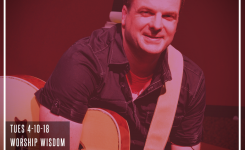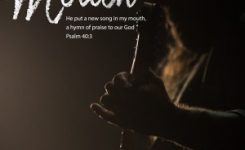Leaders, Singers, Vocal Team, Voice, Worship Leading, Worship Planning
They Aren’t What You Sing
 #SingTheirSongs “Match your voice to the congregation, never make the congregation match yours.” This was said by a good friend. It’s a common problem.
#SingTheirSongs “Match your voice to the congregation, never make the congregation match yours.” This was said by a good friend. It’s a common problem.
We all like it. Most churches don’t. We can sing it. The people can’t. What are we talking about?
Singing songs in the Key of H. Instead of songs being too “High,” let’s change the key to “How” they can better sing/worship together? Psalm 95.1 tells us: “O come, let us sing for joy to the LORD, Let us shout joyfully to the rock of our salvation.” Scripture did not say “O come, let ME sing…”
It clearly says “us” – how can we make this possible for all to participate?
You’ve Been There too
You’re in a worship service, the band is playing your favorite song. But there is one problem (among many others), the only person who is singing is the worship leader. People are trying to fight their way to keep up, but eventually, they give up, stop and watch. Have you seen/heard this in church?
No, it’s not that your people don’t know how to worship, don’t enjoy singing or don’t know the songs they’ve done for years. The difficulty is that the key may be too high and out of their range.
In essence, this is why so many congregations don’t sing, because they cannot find a place to sing. People walk away frustrated or may feel disconnected because they cannot connect vocally to the song. It may sound good in your voice, but that doesn’t mean it’s good for the congregation.
The normal range for the human voice is about middle C or D (below the treble staff), to one octave above those notes: C/D in the middle treble staff space or fourth line of the staff. Most congregations live here C to C. Most male worship leaders (and some females) can sing way outside of this range, from C to wherever. “But singing higher makes me sound good,” said one worship leader.
“Yeah, but is the worship about you, or about helping others?” I replied. Another argument is the age-old: “but that’s how it’s sung on the recording.” True, but when you’re leading worship, you are not there to make an album. Plus, you and your band are not to take the place of the mp3. #1Peter4.10 tells us: “Each of you should use whatever gift you have received to serve others, as faithful stewards of God’s grace in its various forms.”
Our job as leaders is to serve in this same fashion musically. When we select songs, we need to keep the ‘average Joe’ in mind. A rule of thumb and common way to remember is the saying: ‘C to shining C’ or ‘D to D’.
How Do You Find the Right Key for Your Church?
#1 Know your church’s voice. #2 Find the songs they like to sing. #3 Locate the song’s key and check if it’s either too low or too high.
- Select any song, go through the actual lead sheet or piano score to find the highest vocal note in the melody. You may find that the highest note in the song is located in the Chorus or Bridge sections.
- Identify the note names on the treble clef. Choose a new key that’s more comfortable. Move the highest note down (or the lowest note up) to bring it to a more comfortable range. Sometimes in higher songs, you can get away with using the E register notes (Eb, E or E#), just as long as the vocal line doesn’t stay too long in the stratosphere.
- Determine the new note names and what scale they form to give the new key.
Example: If you play these notes together in order: A, B, C#, D# and E, you’ll hear that they are a partial scale of the key of E. This key contains four sharps (F#, G#, C#, D#). If we are singing 10,000 Reasons in the key of G, you will find that the highest notes are E and F# (top space and line of the treble staff).
In fact, measures 1, 3, 4, 5 and 6 keep the melody in a high range. Because of the song’s slow tempo and length of Chorus, after the second or third time of the song in the Key of G, the congregation may be inclined to throw in the towel.
Recap Method
Find a new home: Let’ s use the same song. Find the highest notes, which are concentrated in bars 5 and 6 (E, D and F#). Move the highest notes down by three chromatic steps. Now the highest notes are C#, B natural and D#. There you have it, we’ve managed to move the highest note down from an F# to a D# (2nd top line in the treble clef). Now we are in the key of E – which is our new home.
Try playing the song in the key of E and see how comfortable it is for the normal voice versus singing 10,000 Reasons in the key of G. You will find a stark difference between the keys/ranges.
Note
The idea is to limit the congregation from singing too many or large number of high notes (D, E and beyond). [ctt template=”10″ link=”vxrOD” via=”no” ]You have to keep in mind that the church is not full of trained voices, just average Joe’s and Jane’s :)[/ctt]
Look at Psalm 95.1 again, “let us sing for joy…” let the whole church sing and sing for joy. We sing not to ourselves, but to the Lord as we sing together as the Church.
When you keep in mind the whole church, you keep the church singing. No one wants a solo, or find it tough to compete with the band. The better you lean who your congregation is, the better you become what they are singing.
@BranonDempsey @worshiptt

Worship Team Training® Is your worship team stuck? Want worship leading to be better? Want to be free? We can take you there. Inspire, create and transform the leading of worship. Get a WeekendWorkshop
Copyright 2017 Worship Team Training®









